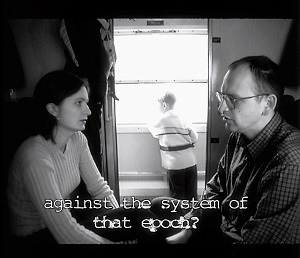Archive 2016-17
Deimantas Narkevičius

- Venue: Fine Art Lecture Theatre
- Start: Tue, 11 Oct 2016 17:30:00 BST
- End: Tue, 11 Oct 2016 19:00:00 BST
Narkeviãius started using film during the early nineties. His films exercise the intricate practice of memory and portray a contemporary society confronted with the painful processes of history.The camera offered him the possibility of exploring different narratives, allowing him to play with the course of time. In film he found a perfect medium for exploring both sound and visual language. The disjunctions between words and images in Narkevicius’s films make manifest the impossibility of an objective documentary. He eschews the close-ups that are a common feature of contemporary documentaries, used to demonstrate the veracity of an interviewee’s testimony. The central characters of Narkeviãius’s narratives are often absent from the screen, replaced by objects, drawings and other surrogates.
Narkeviãius’s work has been exhibited in The Future of Memory, Kunsthalle Wien, Museumsquartier, Vienna, (2015); Manifesta 10, St. Petersburg (2014); All that falls - Palais de Tokyo, Paris, (2014); 'The Way of the Shovel: Art as Archaeology', Museum of Contemporary Art Chicago (MCA), Chicago (2013); Performing Histories, MoMA, The Museum of Modern Art, New York (2012); 'Ostalgia' New Museum, New York (2011); 'Art Unlimited', Art Basel, Basel (2011); 'There's Always a Cup of Sea to Sail In', The 29th Sao Paulo Biennial, Sao Paulo (2010); 'What Keeps Mindkind Alive?', The 11th International Istanbul Biennial, Istanbul (2009); Skulptur Projekte Münster 07, Münster (2007) and The Viewer's Dictatorship, the 50th Venice Biennial, Venice (2003) Deimantas Narkeviãius, The Lithuanian Pavillion, the 49th Venice Biennial, Venice (2001).
http://www.lux.org.uk/collection/artists/deimantas-narkevicius